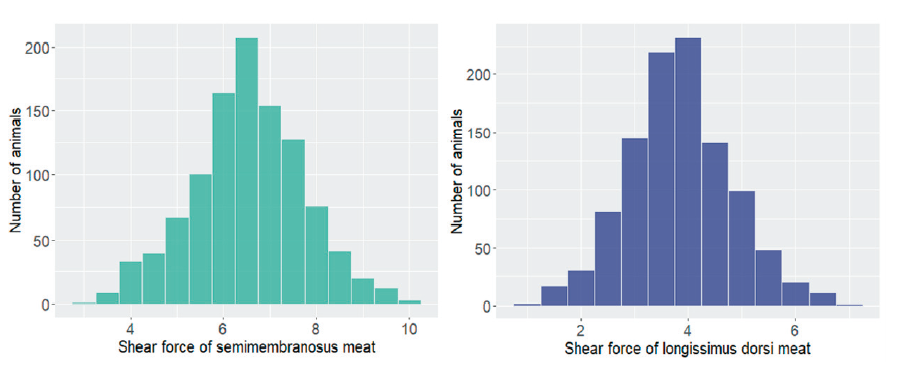Abstract
Hanwoo (Korean cattle) is the most profitable cattle as meat-type one since 1960s with the cherished role in the food industry due to its palatability, which is performed by several characteristics such as tenderness, juiciness, or flavor. Meat tenderness is one of the most important features for the quality of meat and is affected subjectively and objectively by several factors. Therefore, it is essential to identify the distribution of potentially functional SNPs or candidate regions associated with tenderness. Starting from 12 candidate genes extracted from previous study, including
Figures & Tables

Fig. 1. Histogram of the Warner – Bratzler Shear Force of semimembranosus meat (left) and longissimus dorsi meat (right)


